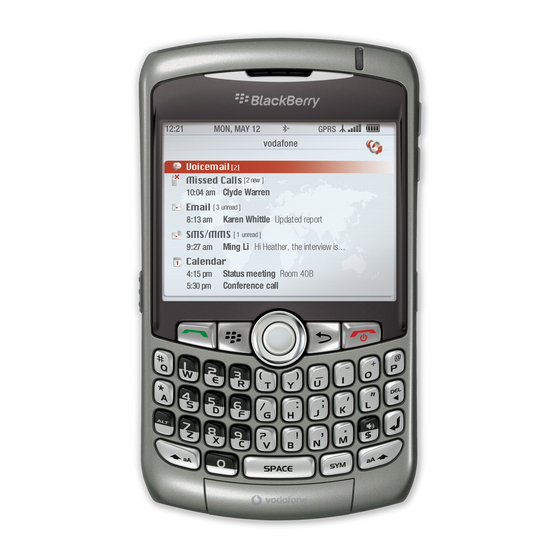Blackberry 8310 Curve AT&T Productinformatie - Pagina 22
Blader online of download pdf Productinformatie voor {categorie_naam} Blackberry 8310 Curve AT&T. Blackberry 8310 Curve AT&T 31 pagina's. Blackberry curve 8310: supplementary guide
Ook voor Blackberry 8310 Curve AT&T: Aan de slag handleiding (46 pagina's), Veiligheid en productinformatie (34 pagina's), Aan de slag handleiding (46 pagina's), Tips en technieken (4 pagina's), Gegevensblad (2 pagina's), Snelstarthandleiding (17 pagina's), Aan de slag handleiding (50 pagina's), Aan de slag handleiding (10 pagina's), Gebruiksaanwijzing (2 pagina's), Gebruiksaanwijzing (2 pagina's), Bedradingsschema (13 pagina's)

